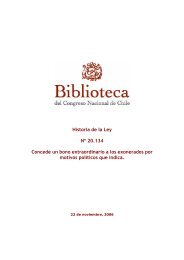alma-photobook
alma-photobook
alma-photobook
You also want an ePaper? Increase the reach of your titles
YUMPU automatically turns print PDFs into web optimized ePapers that Google loves.
Credit: ALMA (ESO/NAOJ/NRAO)<br />
Credit: ALMA (ESO/NAOJ/NRAO)<br />
This photo book, composed for the occasion of the ALMA inauguration, presents the various<br />
phases in the conception and birth of a unique astronomical project: the Atacama Large<br />
Millimeter/submillimeter Array.<br />
Originating in the eighties from three independent projects in three different regions (North Amer-<br />
ica, Japan, Europe), and converging in the nineties towards one project, ALMA became a truly<br />
joint effort in the first years of the new millennium. The combination of the high-tech know-how,<br />
budgetary resources and organizational strengths of the three regions, directed by a strong and<br />
shared vision for future astronomical endeavors, made a solid basis for the realization of this large<br />
and very complex astronomical observatory. After 10 years of construction, the ALMA interferom-<br />
eter is now the largest and highest ground-based observatory.<br />
In the three decades of preparing and constructing ALMA, millimeter/submillimeter astronomy<br />
itself and its associated instrumentation evolved at an incredible rate. From the successful inves-<br />
tigations with space observatories and 8- and 10-meter-class ground-based optical telescopes,<br />
the need for an equivalent sensitivity and resolution in the submillimeter wavelength range<br />
became compelling. Leap frog developments in a wide range of technologies enabled the astronomical<br />
community to set continuously higher goals than initially advertized and thus keeping<br />
ALMA competitive. Following several independent and joint site-testing campaigns, Chile’s excellent<br />
observatory sites — already home to optical and infrared telescopes — emerged as the<br />
world’s best for submillimeter observations too.<br />
Developing methods to overcome the impact on equipment and staff of the high-altitude<br />
location and environment, and pushing the technologies to extremes to meet the accuracies<br />
required for high-frequency heterodyne operations, are just a few examples of what was required<br />
to make ALMA a success. The first results observatory have been a clear demonstration of<br />
ALMA’s transformational science. Another challenge was to collaborate in teams with such a variety<br />
of social backgrounds and cultures, sometimes in widely different environments, with night<br />
and daytime overlapping, while summer and winter merged. This required a strongly motivated<br />
and enthusiastic staff. Several of these challenges are beautifully and poignantly captured in this<br />
photo book.<br />
The inauguration milestone, now reached, is a demonstration that all these difficulties can be,<br />
and have been, overcome. We are proud to be part of this. This is worth a celebration.<br />
Thijs de Graauw<br />
ALMA Director



